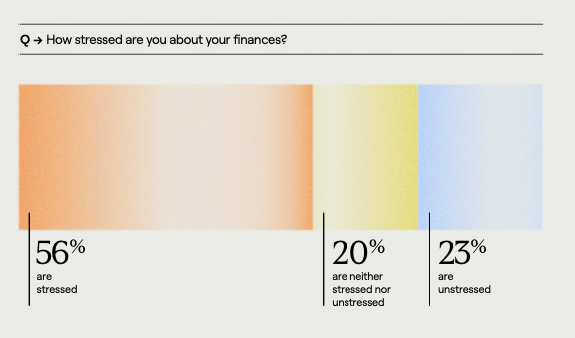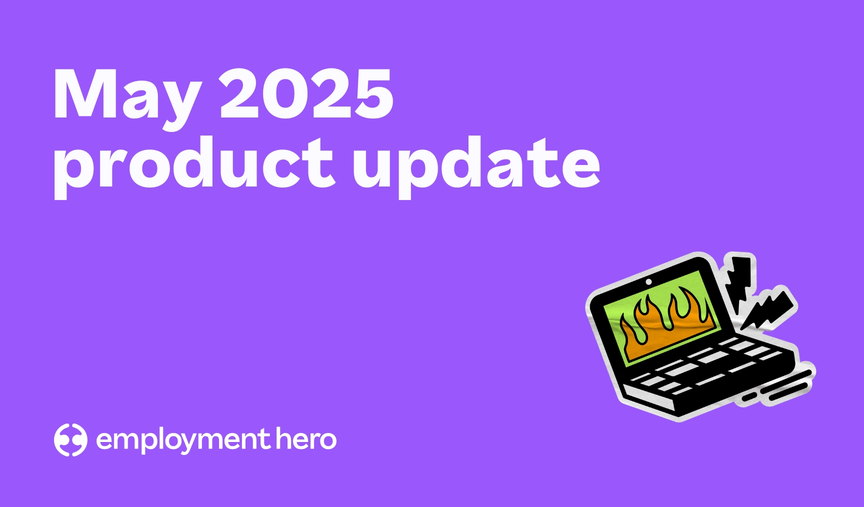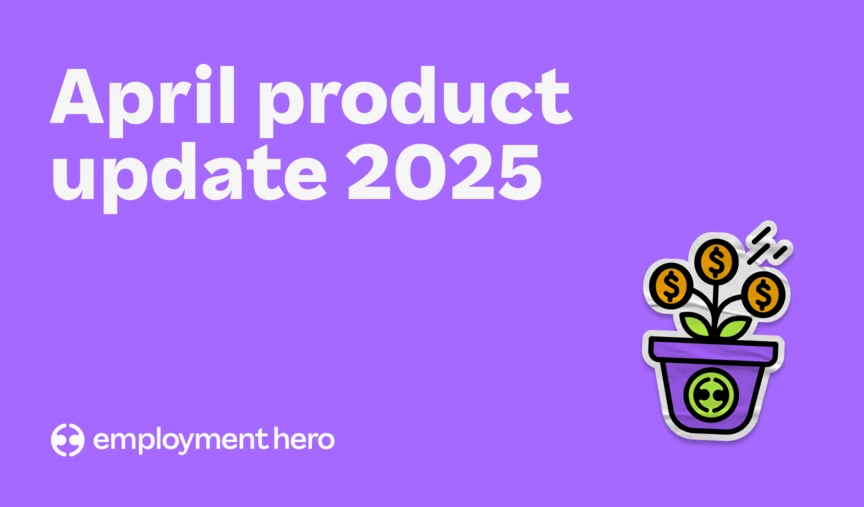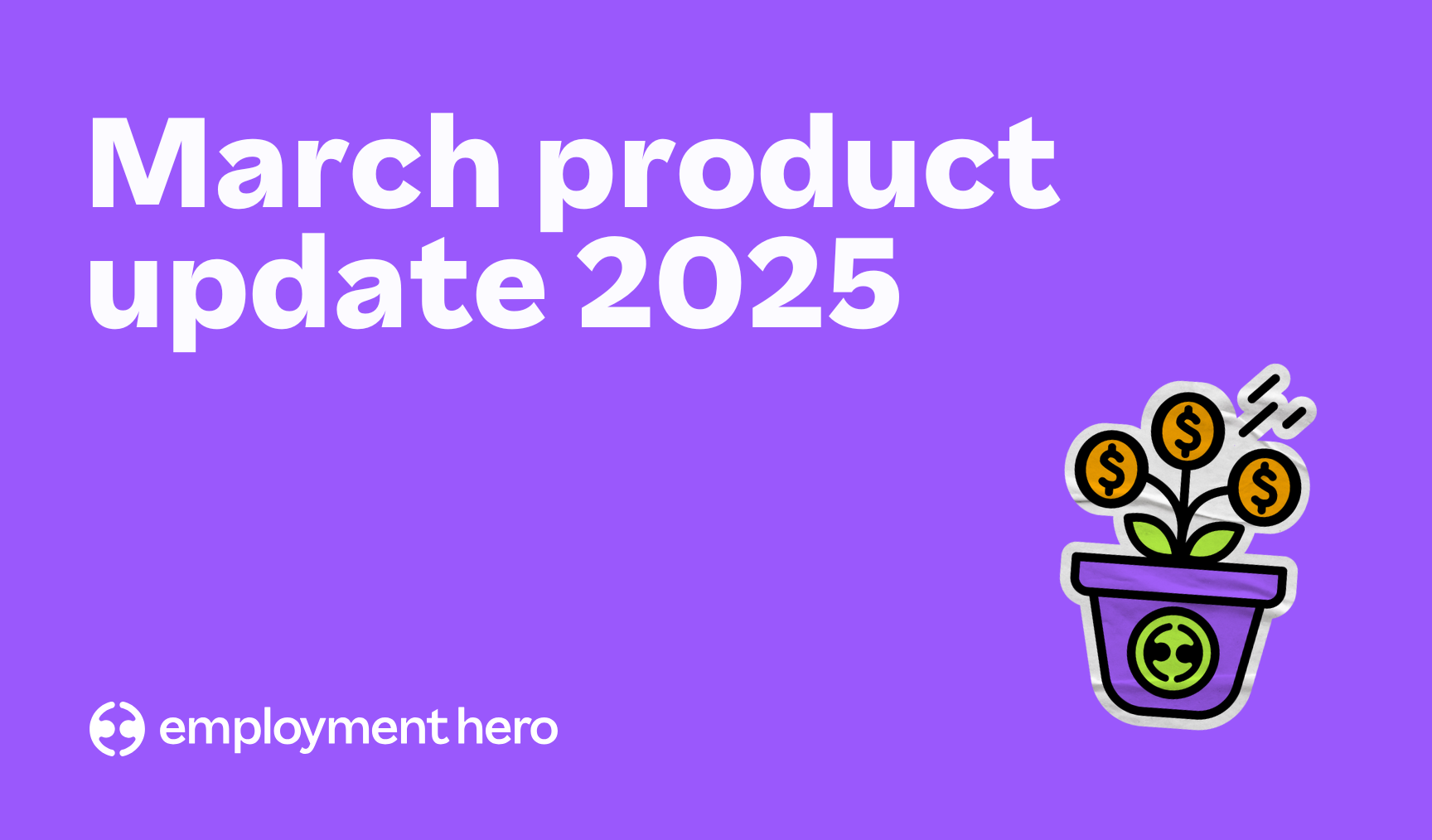8 Workplace wellness trends to watch out for in 2023
From conquering fatigue to hyper-personalisation, here are the latest and greatest trends in employee wellness.

Contents
When we talk about workplace wellness in 2023, we need to go a lot further than the office fruit bowl and a walk on one’s lunch break. This year we need to consider our workplace wellness initiative under the backdrop of the latest Omicron wave, which is seeing significant widespread illness, resulting in staff absenteeism and supply chain issues. There’s also the Great Resignation, which is seeing more workers than ever evaluate their purpose and happiness at work. According to our Employee Movement and Retention Report, up to 48% of workers will consider changing roles in the near future. If we make sure our employees are feeling engaged, supported and well in both their personal and professional lives, we reduce the risk of our team becoming a part of this statistic.
Why should we support workplace wellness?
Retention is only one of the positive outcomes that a great workplace wellbeing program can influence. There are lots of quantifiable impacts of caring for your employees. For example, while everyone has to take a day off once in a while, consistent absenteeism amongst one or several members of staff can be a red flag signalling a problem with employee wellness. According to Forbes, it’s also affecting your bottom line. The average cost of absenteeism is $2650 per year for each employee. An employee’s health and wellbeing can also dramatically influence professional performance. When you care for your employees’ wellbeing, you also bolster a great culture at your business and save money. All of this, in addition to the feel-good glow of caring for another’s wellbeing? Workplace wellness is a must.
8 workplace wellness trends for 2023
Taking into account expert insights, research and the current context; what trends will we see in the workplace wellness space this year, and what are the most relevant benefits that you can offer to see a healthier and happier team?
1. Conquering fatigue
If there’s one thing we’re all feeling after two years of pandemic pressure, it’s fatigue. Employers and employees have weathered immense change and stress, and – even though there might be some light at the end of the tunnel – at the moment, Covid’s grip on our mental health and physical health is harder than it’s ever been. While the heightened fear and anxiety may have lessened with familiarity – pandemic fatigue and burnout has really set in. In 2023, employers will need to use workplace wellness strategies to conquer this sense of exhaustion, which may be a driver of employee absenteeism. Refreshing mindsets and providing safety nets will be key.

Not sure where to start? Consider supplying your team with a safe space to discuss mental health issues through employee assistance programs (EAP), which provides confidential counselling services to your team.
2. Occupational satisfaction
One of the biggest events to shake up the last twelve months has been the Great Resignation – a phenomenon that has seen millions of people make a move from their workplaces in search of new opportunities. While everyone has a different reason for doing this, including a lack of opportunities, or appreciation at their current workplace, there is plenty of evidence to suggest that there has been a shift in how we think about occupational satisfaction. According to research from Gartner on employee attitudes, 65% of workers are rethinking the place that work has in their life. Occupational satisfaction, or occupational health, can be defined as how fulfilled you are by the work that you are engaging with. It measures how strongly you associate with the values, beliefs and goals relating to the work that you do. This year, the why of workplaces will become much more important. If employers do not create a value set and mission that resonates with their employees, they may see more disengagement and movement.
3. Workplace hyper-personalisation
The workplace of the past has always been a static thing. Employees fit into the designated workspace and the five-day, 9-5 pm working structures. The workplace has been built around the traditional needs of the industry, as opposed to the ways that individual employees work best. In 2023, we’ll see a shift from a one size fits all approach to what experts call a ‘workplace hyper-personalisation mindset. Gartner’s Aaron McEwan (one of our HR leaders to watch in 2023) spoke with ABC about this emerging trend. “The balance of power has shifted towards employees. They’ve got a golden opportunity to say, ‘This is what I want from this job. To what degree can you meet me here?’” Elements up for negotiation or discussion could be anything from working location, flexible working arrangements, management style, communication style and benefits. It’s all about giving employees a greater range of choice. “When we design work around the optimum performance profiles of each individual employee, we end up with, obviously, much better productivity, but also happier and more engaged employees,” says Aaron.
4. Fostering belonging
Diversity and inclusion needs to be an essential part of any workplace HR function. While we always need to be interrogating discrimination, internal biases and exclusion within our workplaces, we need to go one step further to create equitable workforces. If diversity is being invited to the party and inclusion is being asked to dance; belonging is hosting the party, picking the music and inviting others. It’s the antithesis to the feeling of being an outsider. Belonging fights all the signs of decreasing employee engagement. A 2019 study from BetterUp found that workplace belonging can lead to an estimated 56% increase in performance, a 50% reduced risk of turnover, and a 75% drop in sick days. On the flipside, the study also found that a single incidence of “micro-exclusion” can lead to an immediate 25% decline in an individual’s performance on a team project. When a person feels a sense of belonging in their workplace, they feel comfortable being their authentic selves. When a business has a company culture that embraces all of its workers, employees are more likely to engage. Everyone benefits from this increase in diverse thought, problem-solving becomes easier, and the team can achieve an overall better sense of employee wellbeing.
5. Mindful working for mental health
How many times have you read (or written) a job ad that puts ‘multitasking’ as a must-have skill? Even though we try to multitask with the best of intentions, the practice actually hinders performance and leaves us vulnerable to greater human error. Our brains are simply not designed to jump between intensive tasks at short intervals. It divides our attention, causing the quality of our work to drop. We need to help our teams take a more mindful approach to work. Mindfulness has been a hot topic around stress management and it’s mental health benefits for the last decade or so. When you do something mindfully, you give your entire focus to it. You build greater awareness of the distractions that pop up, and are able to keep your attention fixed on the task at hand.

What does this look like in practice? You might help employees resist email addiction, reduce notifications and create set times for collaborative and quiet work. You may choose to reduce communications throughout the day, or run them on a consistent schedule that your team can work around. Anything to help cut down the noise, reduce workplace stress, and focus on their priorities.
6. Parental wellness programs
The pandemic put the struggles of working parents in the spotlight. As they juggled working from home during lockdowns and childcare, the pressure and uncertainty that they sustained were insurmountable. This stressful time illuminated many questions about work-life balance, financial health, caring responsibilities and the overlap of personal and professional life. In 2023, workplaces will be giving greater consideration to parental wellness than ever before. Considering their individual needs, build a program around the pillars of flexibility, empathetic leadership and a culture that celebrates family life. Not sure where to start? Download our free guide to managing and supporting working parents.
7. Local socialising
As the Omicron peak passes and the pandemic (hopefully) fades into coexistence with our daily lives, workplaces will once again consider the role of in-person interactions. How can we fulfill a sense of social connection and employee wellness but retain the benefits of remote work? How can we support employees with ‘remoteliness’ without returning to the rigid 9-5? At Employment Hero, we take a ‘remote-first’ approach to work where we ‘work remotely and socialise locally’. This means that the bulk of our employees’ work can be done remotely, but we meet up in local teams to enjoy time together. Making the most of key opportunities to socialise – like at the end of the year or EOFY, for team retreats, for celebration lunches when we hit goals and targets – helps remote workers keep a sense of connectedness and build team relationships. The time we spend together is so much more meaningful than it would be if we were forced to work in the office every day.
8. Financial wellness
Financial stress is one of the most pervasive threats to emotional wellness out there, and the mental health impacts can be severe. Struggling financially can cause depression, anxiety and withdrawal from working life. People can also experience stress in personal finances secondhand, it’s actually the leading cause of relationship breakdowns. Financial wellness programs designed to relieve financial stress levels of the ongoing pandemic will be a major trend this year.

Just a couple of ideas for this include; virtual appointments with a financial advisor, engaging the services of a Financial Wellness Officer, using a program like Employment Hero’s Discounts to offer savings on everyday items and sharing savings tips in weekly newsletters.
Health is wealth.
This year we’re looking far beyond all of the traditional hallmarks of workplace wellness. No longer is wellbeing balanced on free healthy food and on-site fitness classes. Leaders are taking a deeper look at the influencers of our employee experience, and they’re taking a holistic approach. The top workplace wellness trends of 2023 are at once holistic and personalised. It’s about offering programs, benefits and tools that touch each part of human wellbeing – and encouraging your employees to take what they need. To find out more about the state of the workplace wellness across Australia, New Zealand, Singapore, Malaysia and the UK – explore our Wellness at work 2022 Reports.

Over the next couple of months, we’ll be diving deeper into everything you can do to support employee wellbeing at your organisation. Keep your eyes on this space, and in the meantime, download our free Workplace Wellness Pack.
Related Resources
-
 Read more: Product Update: May 2025
Read more: Product Update: May 2025Product Update: May 2025
Follow our May 2025 product update as we share all of the latest and greatest features we’ve released over the…
-
 Read more: Product Update: April 2025
Read more: Product Update: April 2025Product Update: April 2025
Follow our April 2025 product update as we share all of the latest and greatest features we’ve released over the…
-
 Read more: Product Update: March 2025
Read more: Product Update: March 2025Product Update: March 2025
Follow our March 2025 product update as we share all of the latest and greatest features we’ve released over the…








